Chrysler 2009 Annual Report Download - page 283
Download and view the complete annual report
Please find page 283 of the 2009 Chrysler annual report below. You can navigate through the pages in the report by either clicking on the pages listed below, or by using the keyword search tool below to find specific information within the annual report.-
 1
1 -
 2
2 -
 3
3 -
 4
4 -
 5
5 -
 6
6 -
 7
7 -
 8
8 -
 9
9 -
 10
10 -
 11
11 -
 12
12 -
 13
13 -
 14
14 -
 15
15 -
 16
16 -
 17
17 -
 18
18 -
 19
19 -
 20
20 -
 21
21 -
 22
22 -
 23
23 -
 24
24 -
 25
25 -
 26
26 -
 27
27 -
 28
28 -
 29
29 -
 30
30 -
 31
31 -
 32
32 -
 33
33 -
 34
34 -
 35
35 -
 36
36 -
 37
37 -
 38
38 -
 39
39 -
 40
40 -
 41
41 -
 42
42 -
 43
43 -
 44
44 -
 45
45 -
 46
46 -
 47
47 -
 48
48 -
 49
49 -
 50
50 -
 51
51 -
 52
52 -
 53
53 -
 54
54 -
 55
55 -
 56
56 -
 57
57 -
 58
58 -
 59
59 -
 60
60 -
 61
61 -
 62
62 -
 63
63 -
 64
64 -
 65
65 -
 66
66 -
 67
67 -
 68
68 -
 69
69 -
 70
70 -
 71
71 -
 72
72 -
 73
73 -
 74
74 -
 75
75 -
 76
76 -
 77
77 -
 78
78 -
 79
79 -
 80
80 -
 81
81 -
 82
82 -
 83
83 -
 84
84 -
 85
85 -
 86
86 -
 87
87 -
 88
88 -
 89
89 -
 90
90 -
 91
91 -
 92
92 -
 93
93 -
 94
94 -
 95
95 -
 96
96 -
 97
97 -
 98
98 -
 99
99 -
 100
100 -
 101
101 -
 102
102 -
 103
103 -
 104
104 -
 105
105 -
 106
106 -
 107
107 -
 108
108 -
 109
109 -
 110
110 -
 111
111 -
 112
112 -
 113
113 -
 114
114 -
 115
115 -
 116
116 -
 117
117 -
 118
118 -
 119
119 -
 120
120 -
 121
121 -
 122
122 -
 123
123 -
 124
124 -
 125
125 -
 126
126 -
 127
127 -
 128
128 -
 129
129 -
 130
130 -
 131
131 -
 132
132 -
 133
133 -
 134
134 -
 135
135 -
 136
136 -
 137
137 -
 138
138 -
 139
139 -
 140
140 -
 141
141 -
 142
142 -
 143
143 -
 144
144 -
 145
145 -
 146
146 -
 147
147 -
 148
148 -
 149
149 -
 150
150 -
 151
151 -
 152
152 -
 153
153 -
 154
154 -
 155
155 -
 156
156 -
 157
157 -
 158
158 -
 159
159 -
 160
160 -
 161
161 -
 162
162 -
 163
163 -
 164
164 -
 165
165 -
 166
166 -
 167
167 -
 168
168 -
 169
169 -
 170
170 -
 171
171 -
 172
172 -
 173
173 -
 174
174 -
 175
175 -
 176
176 -
 177
177 -
 178
178 -
 179
179 -
 180
180 -
 181
181 -
 182
182 -
 183
183 -
 184
184 -
 185
185 -
 186
186 -
 187
187 -
 188
188 -
 189
189 -
 190
190 -
 191
191 -
 192
192 -
 193
193 -
 194
194 -
 195
195 -
 196
196 -
 197
197 -
 198
198 -
 199
199 -
 200
200 -
 201
201 -
 202
202 -
 203
203 -
 204
204 -
 205
205 -
 206
206 -
 207
207 -
 208
208 -
 209
209 -
 210
210 -
 211
211 -
 212
212 -
 213
213 -
 214
214 -
 215
215 -
 216
216 -
 217
217 -
 218
218 -
 219
219 -
 220
220 -
 221
221 -
 222
222 -
 223
223 -
 224
224 -
 225
225 -
 226
226 -
 227
227 -
 228
228 -
 229
229 -
 230
230 -
 231
231 -
 232
232 -
 233
233 -
 234
234 -
 235
235 -
 236
236 -
 237
237 -
 238
238 -
 239
239 -
 240
240 -
 241
241 -
 242
242 -
 243
243 -
 244
244 -
 245
245 -
 246
246 -
 247
247 -
 248
248 -
 249
249 -
 250
250 -
 251
251 -
 252
252 -
 253
253 -
 254
254 -
 255
255 -
 256
256 -
 257
257 -
 258
258 -
 259
259 -
 260
260 -
 261
261 -
 262
262 -
 263
263 -
 264
264 -
 265
265 -
 266
266 -
 267
267 -
 268
268 -
 269
269 -
 270
270 -
 271
271 -
 272
272 -
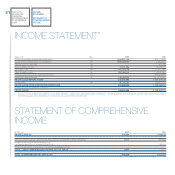 273
273 -
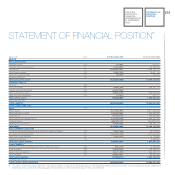 274
274 -
 275
275 -
 276
276 -
 277
277 -
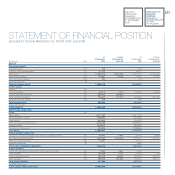 278
278 -
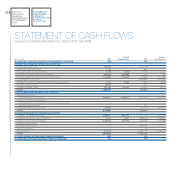 279
279 -
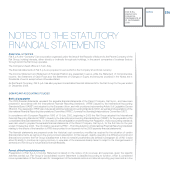 280
280 -
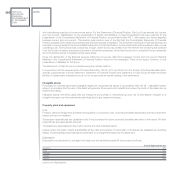 281
281 -
 282
282 -
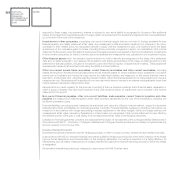 283
283 -
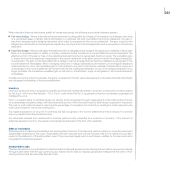 284
284 -
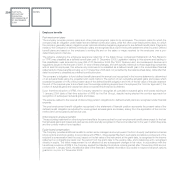 285
285 -
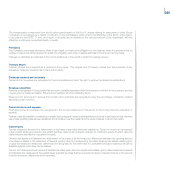 286
286 -
 287
287 -
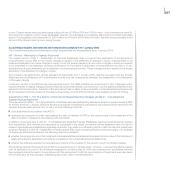 288
288 -
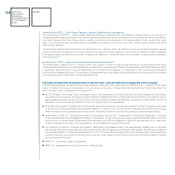 289
289 -
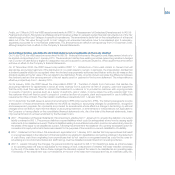 290
290 -
 291
291 -
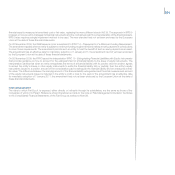 292
292 -
 293
293 -
 294
294 -
 295
295 -
 296
296 -
 297
297 -
 298
298 -
 299
299 -
 300
300 -
 301
301 -
 302
302 -
 303
303 -
 304
304 -
 305
305 -
 306
306 -
 307
307 -
 308
308 -
 309
309 -
 310
310 -
 311
311 -
 312
312 -
 313
313 -
 314
314 -
 315
315 -
 316
316 -
 317
317 -
 318
318 -
 319
319 -
 320
320 -
 321
321 -
 322
322 -
 323
323 -
 324
324 -
 325
325 -
 326
326 -
 327
327 -
 328
328 -
 329
329 -
 330
330 -
 331
331 -
 332
332 -
 333
333 -
 334
334 -
 335
335 -
 336
336 -
 337
337 -
 338
338 -
 339
339 -
 340
340 -
 341
341 -
 342
342 -
 343
343 -
 344
344 -
 345
345 -
 346
346 -
 347
347 -
 348
348 -
 349
349 -
 350
350 -
 351
351 -
 352
352 -
 353
353 -
 354
354 -
 355
355 -
 356
356 -
 357
357 -
 358
358 -
 359
359 -
 360
360 -
 361
361 -
 362
362 -
 363
363 -
 364
364 -
 365
365 -
 366
366 -
 367
367 -
 368
368 -
 369
369 -
 370
370 -
 371
371 -
 372
372 -
 373
373 -
 374
374
 |
 |

FIAT S.P.A.
STATUTORY
FINANCIAL
STATEMENTS AT
31 DECEMBER
2009
NOTES
282
respond for these losses, the company’s interest is reduced to zero and a liability is recognised for its share of the additional
losses. If the impairment loss subsequently no longer exists it is reversed and the reversal is recognised in the income statement
up to the limit of the cost of the investment.
Investments in other companies, comprising non-current financial assets that are not held for trading (available-for-sale
financial assets), are initially measured at fair value. Any subsequent profits and losses resulting from changes in fair value,
correlated to their market price, are recognised directly in equity until the investment is sold or is impaired; when the asset
is disposed of, the cumulative gains or losses, including those previously recognised in equity, are reclassified in the income
statement for the period; when the asset is impaired, accumulated losses are recognised in the income statement. Investments
in other smaller companies for which a market price is not available are measured at cost, adjusted for any impairment losses.
Other financial assets which the company has the intention to hold to maturity are recognised on the basis of the settlement
date and, on initial recognition, are measured at acquisition cost (being representative of fair value) on initial recognition in the
statement of financial position, inclusive of transaction costs other than in respect of assets held for trading. These assets are
subsequently measured at amortised cost using the effective interest method.
Other non-current assets, trade receivables, current financial receivables and other current receivables, excluding
assets deriving from derivative financial instruments and all financial assets for which published price quotations in an active
market are not available and whose fair value cannot be determined reliably, are measured, to the extent that they have a
fixed term, at amortised cost, using the effective interest method. When the financial assets do not have a fixed term, they are
measured at cost. Receivables with maturities of over one year which bear no interest or an interest rate significantly lower than
market rates are discounted using market rates.
Assessments are made regularly for the purpose of verifying if there is objective evidence that a financial asset, separately or
within a group of assets, may have been impaired. If any such evidence exists, an impairment loss is included in the income
statement for the period.
Non-current financial payables, other non-current liabilities, trade payables, current financial payables and other
payables are measured on initial recognition at fair value (normally represented by the cost of the transaction), including any
additional transaction costs.
Financial liabilities are subsequently measured at amortised cost using the effective interest method, except for derivative
financial instruments and liabilities for financial guarantee contracts. Financial liabilities hedged by derivative instruments are
measured in accordance with hedge accounting principles applicable to fair value hedges. Gains and losses arising from
measurement at fair value, caused by fluctuations in interest rates, are recognised in the income statement and are offset by
the effective portion of the gain or loss arising from remeasurement at fair value of the hedging instrument.
Liabilities for financial guarantee contracts are measured at the higher of the estimate of the contingent liability (determined in
accordance with IAS 37 - Provisions, Contingent Liabilities and Contingent Assets) and the amount initially recognised less any
amount released to income over time.
Derivative financial instruments
Derivative financial instruments are used for hedging purposes, in order to reduce currency, interest rate and market price risks.
In accordance with IAS 39, derivative financial instruments qualify for hedge accounting only when at the inception of the hedge
there is formal designation and documentation of the hedging relationship, the hedge is expected to be highly effective, its
effectiveness can be reliably measured and it is highly effective throughout the financial reporting periods for which the hedge
is designated.
All derivative financial instruments are measured in accordance with IAS 39 at fair value.
